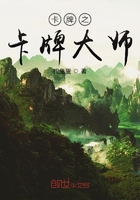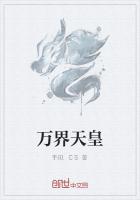"We have not learned all about water yet, it seems," said Will, as the two boys trudged home from school.
"No," said Fred, "I expect there is plenty more for us to learn, and yet it all seems so simple when teacher leads us to look at the things in the proper way."They had just been promoted again to a higher class, and that day the teacher had given the class the first object lesson of the new course. It was about the properties of water.
Our two boys seemed to have taken a new interest in life and in the things around them from the day they had their first object lesson. They had been through two courses of lessons, and were now about to commence the third.
"What are you so busy with, boys?" said Norah to them after tea.
"We are getting a few things ready for another chat about water," said Fred, "if you would like to join us, Norah.""Oh yes," said she, "I should. But I can"t think what else you can have to say about water. We know that it is a liquid, and that it dissolves things that are put into it, and that-""There, there, wait a minute, little girl," said Will.
"Suppose you tell us why you call water a liquid." "Oh, that"s easy," said Norah. "First of all waterhas no shape of its own. It always takes the shape of the vessel which holds it. Then, too, it cannot stand in a heap, but always keeps a level surface.
"We cannot grasp water in our hands, to pick up a handful of it, as we could a handful of sugar or flour or raisins. The water would fall away in drops out of our hands and run along the floor, because water always flows down and tries to get lower. Everything that is like water in these respects is a liquid.""I think she knows why water is called a liquid, Fred, so we may as well talk now about the other properties of water." said Will.
Fred had got several tumblers, just as he had seen his teacher do in class. He put clear water in one, and milk in another, and in the rest of them some water that he had colored with a few drops of red, black, and blue ink. He showed Norah these colored waters first, then the milk, and lastly the glass of clear water.
"Now, little girl," said he, "what color is water? You see it is not white; the milk is white. Neither is it black, or red, or blue.""I don"t think it has any color." said Norah.
"And you are quite right," said both the boys. "Water is a colorless liquid.""Now," Fred continued, "look through the tumbler of water, and then through the milk. Can you see this ball through the milk?""No."
"Can you see it through the water?"
"Yes, I can see it through the water, but not through the milk.""Remember, then, that water is transparent, milk is opaque. Water is a colorless transparent liquid. Milk is a white opaque liquid.""And remember, Norah," said Will, "that we learn these properties of water through our eyes, by the sense of sight.
"Now, suppose we made you shut your eyes, and tell the names of various liquids, such as tea, vinegar, cocoa, coffee, brine, by smelling and tasting them, could you do it?""Oh yes, I am sure I could." said Norah.
"Then shut your eyes, and tell us the name of this one by first smelling it and then tasting it." said Fred.
"I can neither smell nor taste anything." said Norah.
"Now open your eyes and see what the liquid is," said her brother. "You see it is water. Water has neither odor nor taste. We say it is an inodorous and tasteless liquid, but we learn this through two other senses-the sense of smell and the sense of taste."SUMMARY
Water is a liquid. Liquids have no shape of their own; they take the shape of the vessel which holds them; they ?ow about; they break up into drops; they will not stand in a heap, but always keep a level surface. Water is a transparent, colorless, tasteless, inodorous liquid.
Lesson 02















